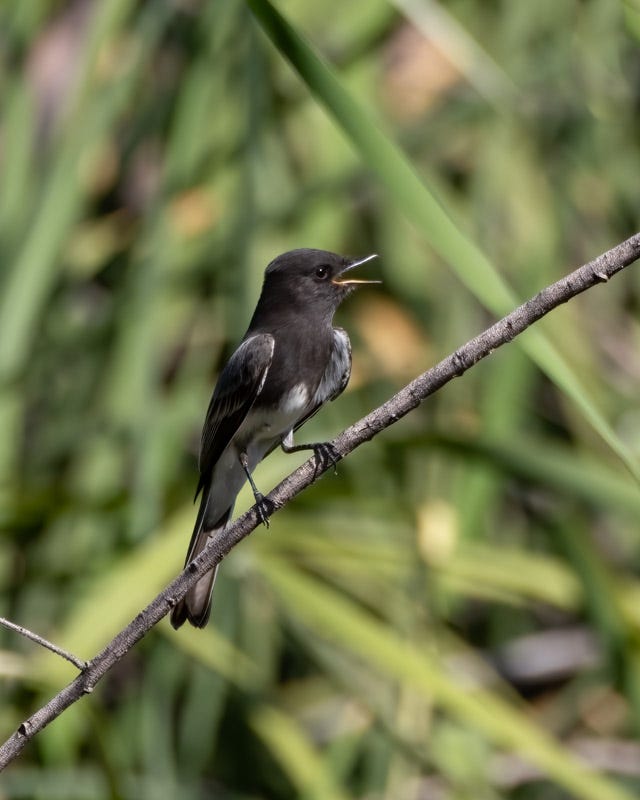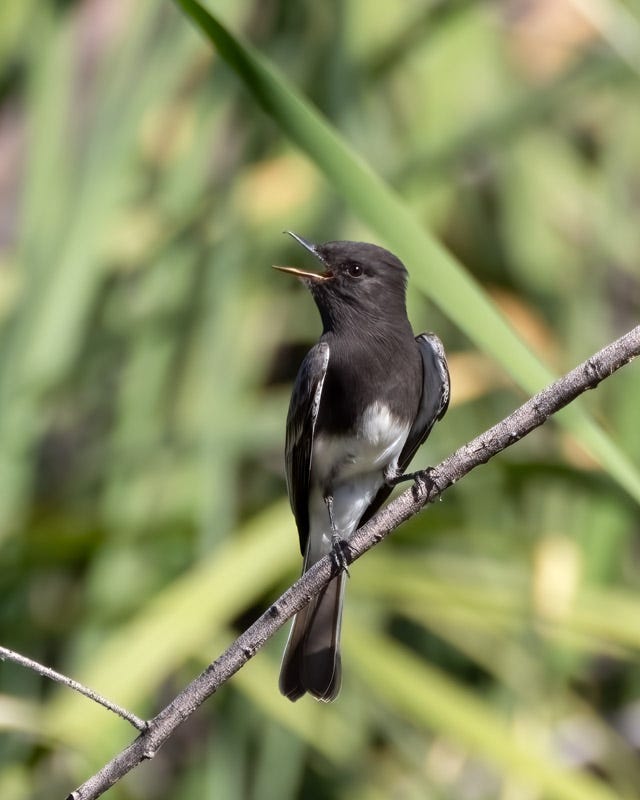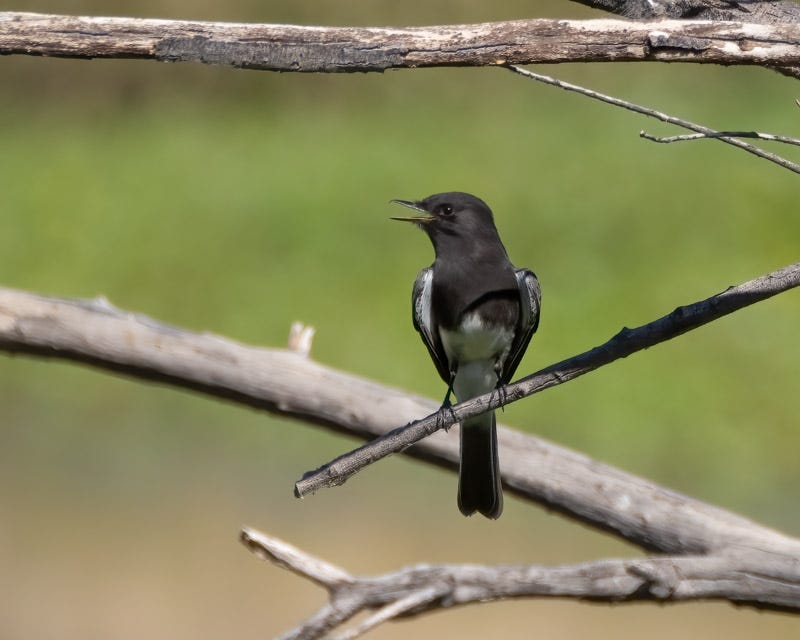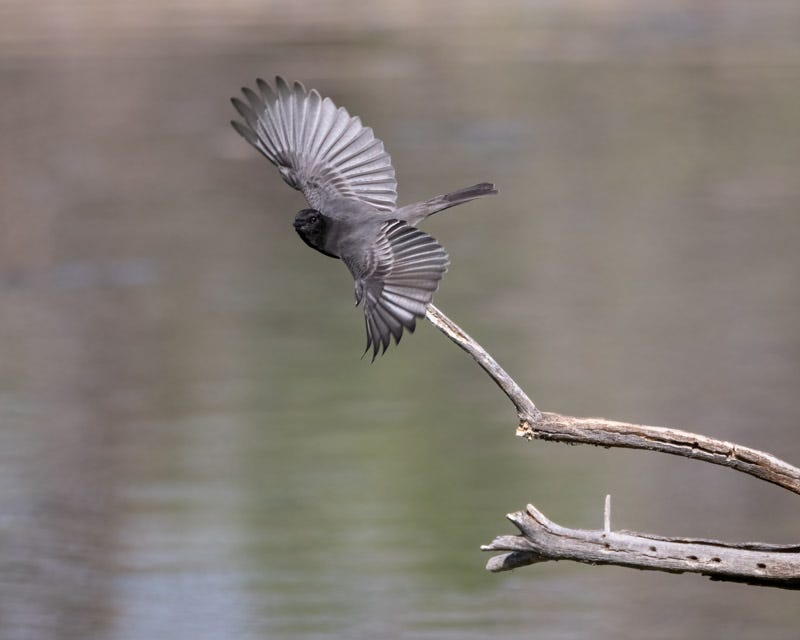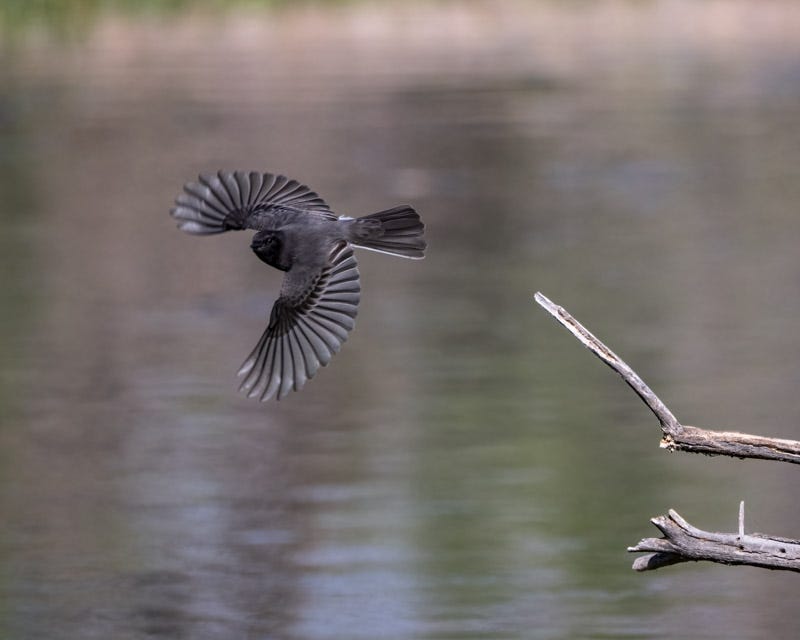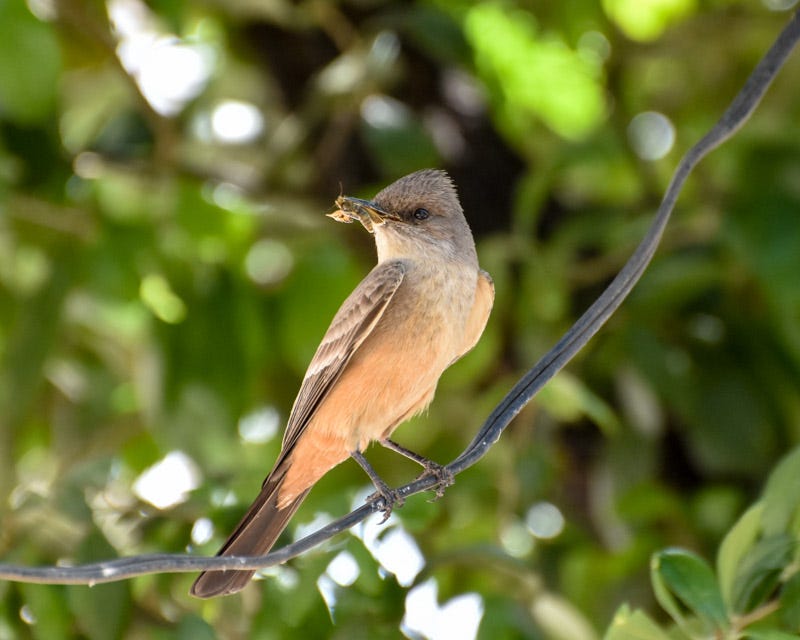Black Phoebe at El Rio Preserve
Oct. 30, 2024: As always, a Black Phoebe at the waters edge
Recently I went with a friend to El Rio Preserve in Marana. We brought chairs and found a nice spot in the shade overlooking a small inlet to sit and wait for the birds to come to us. Among the birds we saw was a Black Phoebe.
It was a warm afternoon, so perhaps that is why the Black Phoebe had its beak open and its wings set away from its side. There was water between the Phoebe and where I was sitting on the other side of the inlet.
The Phoebe flew to another perch closer to the larger lake. Black Phoebe's are always found near bodies of water. They sit in the open, usually not on a high perch, and scan for insects.
Apparently the first perch was not quite good enough. The Phoebe flew to another perch that was well over the water.
It saw an insect and took off after it. I couldn't tell whether or not it caught anything as it flew away afterwards.
Sitting in one spot offers an advantage of sorts. It allows you the opportunity to learn about birds over the course of time. Once the Black Phoebe left us, we didn't see it for a while. But eventually, it returned and perched on the exact same branch as before. Apparently, that is a good spot for finding insects. Shortly, it flew off once more.
It was a very nice afternoon at the edge of El Rio. I've got other bird photos to share in my next email.
Birdnote tells us about the two Phoebe species of birds that we see in the Southwest. My photos in Marana are of the Black Phoebe, but Birdnote also tells us about the Say's Phoebe:
https://www.birdnote.org/podcasts/birdnote-daily/two-phoebes-share-west
For perspective, here are two photos of Say's Phoebes that I took several years ago. First is a Say's Phoebe taken west of the Tucson Mountains in Avra Valley in 2019. The Say's was perched on a tumbleweed, aka a Russian Thistle:
This photo of a Say's Phoebe was shot near its nest at Catalina Foothills High School Football stadium in 2017. There were young in the nest that it was feeding.


